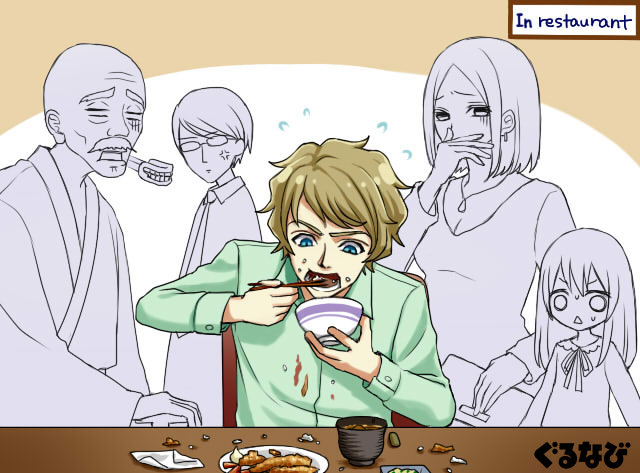A Manga Guide to Chopstick Etiquette 101
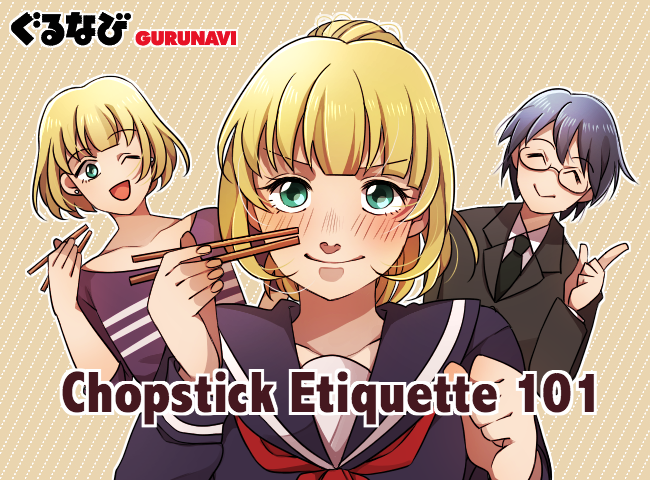
When it comes to chopstick etiquette in Japan, there are certain manners that you must always follow. Poor dining manners can make people around you feel uncomfortable and seriously hamper your ability to socialize in Japan. Each wrong way of holding chopsticks even has a name, which should give you a clue about how important it is!
Level up your chopstick etiquette and get ready to dine in even the most proper social situations with our guide for truly refined chopstick manners.
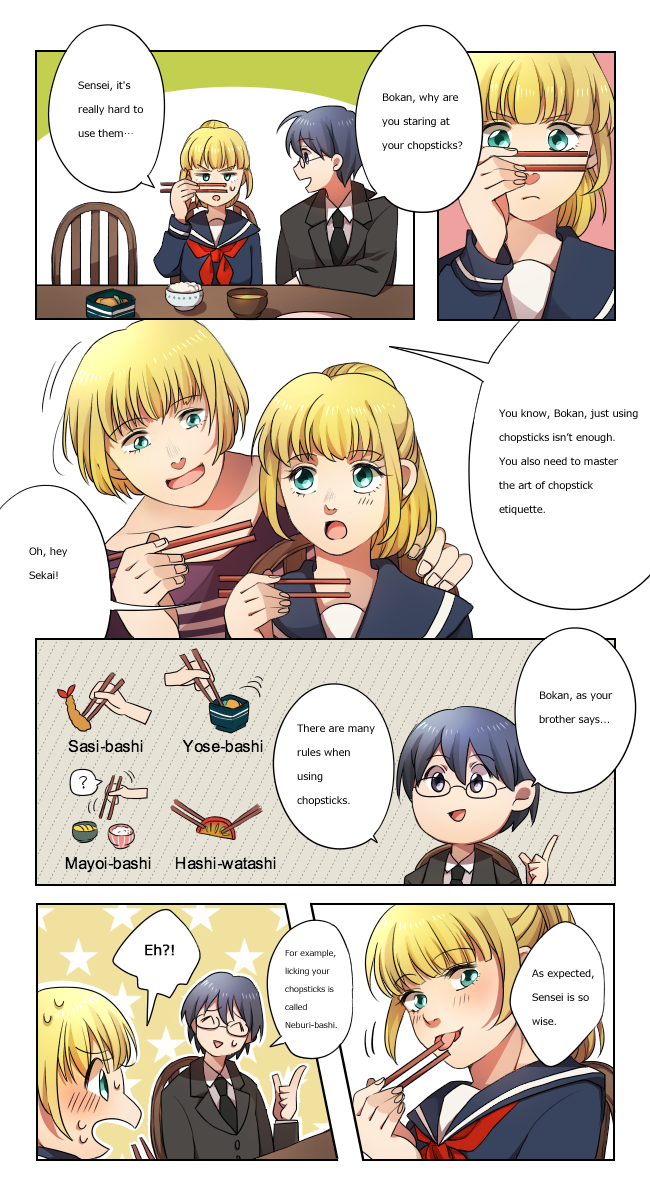
Chopstick Etiquette 101
How to Hold Your Chopsticks
You should always hold chopsticks in one hand, never separately like a knife and fork, and you certainly shouldn’t try to cut or tear your food into smaller pieces while holding a chopstick in each hand, which is known as chigiri-bashi. It’s also frowned upon to hold your chopsticks together like a spoon and shovel food into your mouth, a taboo called yoko-bashi. And you should never be caught holding chopsticks like a shovel or grabbing them with a closed fist, as this can seem like you’re holding a weapon (nigiri-bashi).
If your grip on your chopsticks becomes unsteady and you find that your chopsticks are crooked or uneven in your hand, it’s bad manners to try and straighten your chopsticks by holding them upright and tapping them on your plate or the tabletop (soroe-bashi). Instead, use your free hand to adjust your chopsticks so you are holding them correctly again.
Don’t Put Chopsticks in Your Mouth
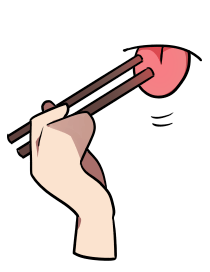
Another thing to remember is, while chopsticks are used to raise food to your mouth, they don’t belong in your mouth. You should never hold your chopsticks in your mouth (kuitsuki-bashi) or chew on them (kami-bashi), and you definitely shouldn’t try to lick your chopsticks clean (neburi-bashi).
A similar taboo is mogi-bashi, or removing bits of food that are stuck to your chopsticks—such as grains of rice—with your mouth. Rinsing off your chopsticks in your miso soup, a taboo known as arai-bashi, is also to be avoided. And it goes without saying that you shouldn’t try to use your chopsticks to pick food out from between your teeth like a toothpick (yoji-bashi), which is sure to scandalize anyone that you might be dining with.
Use a Chopstick Rest (Hashi-oki)
As mentioned in our previous article on table manners, standing your chopsticks upright (tate-bashi or hotoke-bashi) is a very big taboo because of its connection to Buddhist funeral rites.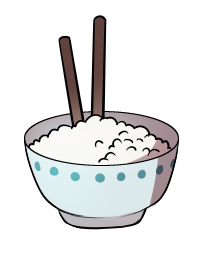
While in a casual setting, you might rest your chopsticks across the top of a bowl like a bridge (watashi-bashi), this is actually considered unrefined so you should refrain from doing it on more formal occasions.
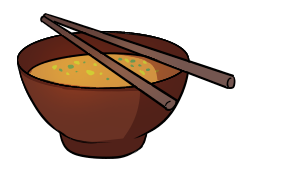
In a refined setting, a hashi-oki (chopstick rest) will almost certainly be provided, so you should definitely use it. Otherwise, rest your chopsticks on top of your hashi-bukuro, the paper sleeve that the chopsticks came wrapped in.
Don’t Motion or Point with Chopsticks
Pointing is considered rude in many cultures and Japan is no exception, especially when holding a pair of chopsticks in your hand. Sashi-bashi, or pointing with your chopsticks, is a big no-no as it’s the equivalent of pointing at someone with a steak knife.
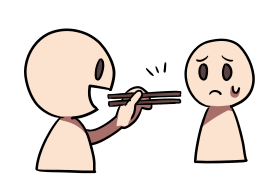
Also frowned upon is waiving your chopsticks around in the air or raising them above your head, which is known as furiage-bashi.
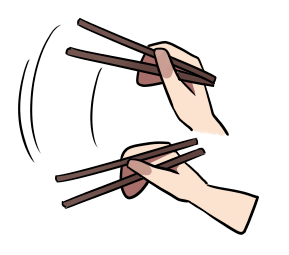
And you shouldn’t try to use your chopsticks to get other people’s attention by tapping them on a cup or a dish (tataki-bashi), unlike in western cultures where it’s acceptable to tap a fork against the side of a glass when making a toast.
Keep Your Chopsticks Clean
When eating with chopsticks, it’s important to use them neatly and make sure that they don’t get too dirty. This practice goes back to the time before disposable chopsticks became commonplace, and it was important to care for chopsticks to extend their lifespan. A traditional guideline is to make sure that no more than 3 cm (about 1 inch) of the tip of your chopsticks comes into contact with food. This means you should avoid plunging your chopsticks into soup or other dishes, and you should only use the tip of your chopsticks when picking up food items.

Chopstick Etiquette when Dining with Others
A typical Japanese meal includes several different side dishes, called okazu, presented along with the main dish and a bowl of rice. You should try a little bit of each dish, rather than eating just one, which is called kasane-bashi. If you find that one of the dishes is slightly out of reach, it’s inconsiderate to use your chopsticks to try and drag it closer to you (yose-bashi), as that puts the dish out of reach of everyone else. You should also avoid picking up a bowl or dish while holding chopsticks in your hand (mochi-bashi).
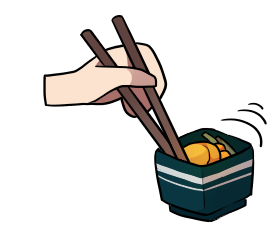
Instead, dishes should be picked up with your free hand. And if you run out of rice, you shouldn’t hold your chopsticks in your free hand while presenting your rice bowl for a refill, which is called uke-bashi.
After eating from a dish, it’s a good idea to take a bite of rice before trying the next dish. Eating only okazu or going directly from one dish to another without having rice in between (utsuri-bashi) may be considered greedy. You should also avoid fishing around with your chopsticks in a dish looking for your favorite ingredient, which is known as saguri-bashi, or picking out the things that you don’t like with your chopsticks (hane-bashi), which is considered impolite.
If the food has a sauce or broth, make sure not to let any sauce or juices drip from your chopsticks or from the food when you pick it up (namida-bashi).
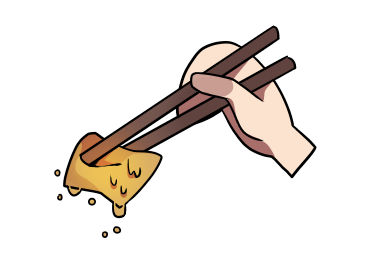
And although it may seem polite, when lifting food from a dish to your mouth, it’s actually poor manners to hold your free hand below your chopstick hand to catch any food that may fall. This is known as tezara (literally, “hand plate”) and implies that you are unskilled with chopsticks, which makes for a bad impression when dining in a refined setting.
Although it may seem difficult to choose from the large variety of dishes offered in a traditional Japanese meal, when selecting an okazu to try, it’s important to be decisive about what you’re going to eat. You shouldn’t waver back and forth between the dishes with your chopsticks hovering in the air as though you’re unable to decide what to eat (mayoi-bashi).
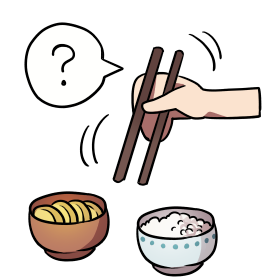
And once you’ve selected a dish, you shouldn’t drop your food after picking it up. Unlike an accidental chopstick slip, sora-bashi means to intentionally drop food back onto a dish after you’ve grasped it in your chopsticks.
Finally, you should avoid stabbing food with your chopsticks as way of picking it up or cutting it in two. Though a little bit confusing, doing this is also called sashi-bashi (the same as pointing your chopsticks at others).
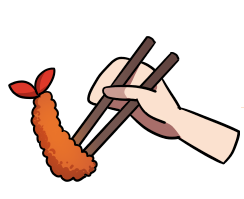
When the above guidelines are considered together it becomes obvious: for truly refined chopstick etiquette, it’s important to be considerate of the other people you’re dining with and to wield your chopsticks deliberately and purposefully without seeming lost or confused. Even if you find yourself dining in an unfamiliar setting such as a traditional Japanese meal, you should strive to carry yourself in a cool and collected way, as it’s a sign of the utmost refined manners.




